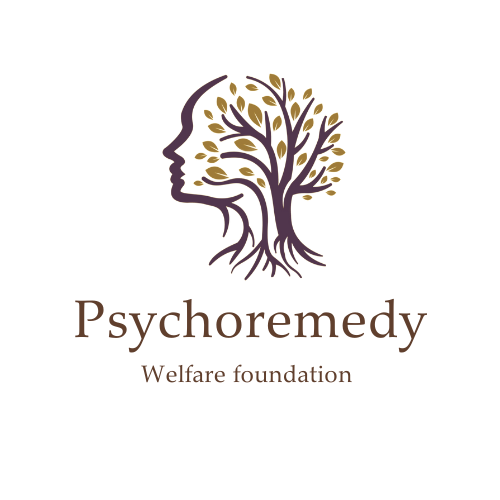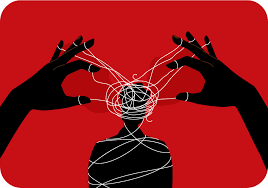Unmasking the Inner Storm: Cutting Through the Duel Between Panic and Anxiety Attacks (Mind-Blowing Insights)
Introduction
You’ve experienced it, right? That abrupt, mysterious flash of fear that appears out of thin air, clamping down on your body like a vice. Or maybe it’s the low thrum of concern, a nagging background hum of worry that tints every thought. Both panic attacks and anxiety attacks are profoundly distressing experiences, commonly conjoined in everyday parlance. But beneath the umbrella of a common term, these are different phenomena, each with its own distinguishing fingerprint. Learning about their distinctions isn’t a matter of pedantry; it is the initial essential step toward healthy coping and regaining mastery. Get ready to have your understanding of these internal storms completely turned on its head as we explore the intriguing, frequently mind-blowing subtleties that distinguish them.
The Anatomy of Fear: Cracking the Essential Difference
At its core, the most important distinguishing factor is their onset and precipitant. Imagine a *panic attack to be like an unexpected tsunami. It bursts with complete intensity, usually without warning, reaching peak severity in mere minutes. There may not be a clear external stimulus; it can seem as though your own body is against you. In contrast, an anxiety attack is similar to a slow-developing hurricane. It tends to have recognizable triggers – a pressure-filled work deadline, problems in a relationship, money concerns – and the intensity builds gradually over minutes, hours, or days.
This variation in onset has deep-seated consequences regarding how we feel them and, importantly, how we deal with them.
The Symptom Spectrum: Decoding the Physical and Psychological Symptoms
Although panic and anxiety attacks do have some common symptoms – a racing heart, sweating, shortness of breath – the focus and intensity can be very different.
Panic Attack: The Body in Overdrive
When you have a panic attack, your body’s fight-or-flight response goes into hyperdrive, usually without reason. The symptoms are usually more severe and bodily:
- Abrupt, intense fear or terror: A sense of impending disaster or losing control.
- Racing heart or rapid heartbeat (tachycardia): You may feel that your heart will explode out of your chest.
- Sweating: Usually sudden and copious.
- Trembling or shaking: Spasms of muscles that are not in your control.
- Shortness of breath or feeling of smothering (dyspnea): Having trouble breathing.
- Feelings of choking: The feeling that your airway is closing down.
- Chest pain or discomfort: This can be frightening and usually misunderstood as a heart attack.
- Nausea or abdominal distress: Your digestive system can respond as well.
- Feeling dizzy, unsteady, lightheaded, or faint: A feeling of being disconnected from the world around you.
- Derealization (unreality feelings) or depersonalization (detachment from self):
This otherworldly feeling is especially terrifying. - Losing control or going crazy: A frightening belief that you’re losing hold of reality.
- Dying: A primitive and overwhelming fear of death.
The raw intensity and pattern of these symptoms can make a panic attack feel like a life-or-death crisis.
Anxiety Attack: The Mind in Overdrive
Though anxiety attacks do include physical symptoms, the focus is usually more on cognitive and emotional distress:
- Excessive worry or apprehension: Ongoing and usually uncontrollable thinking about possible adverse consequences.
- Restlessness or feeling on edge: Inability to relax or feeling restless and agitated at all times.
- Difficulty concentrating or mind going blank: Anxious thinking can monopolize mental resources.
- Muscle tension: Frequently in the neck, shoulders, and jaw.
- Fatigue: Tiredness after sufficient rest because one is continuously in alert mode.
- Irritability: Easiness in getting irritated or angry.
- Sleep disturbances (insomnia): Difficulty in falling asleep or remaining asleep as a result of racing thoughts.
- Physical symptoms related to chronic stress: Headaches, stomach pain, and other stress-related conditions may worsen during times of increased anxiety.
While the symptoms of an anxiety attack can be distressing and significantly impact daily life, they typically don’t reach the same peak intensity or sudden onset as those of a panic attack.
Duration and Aftermath: The Lingering Effects
Panic attacks are generally brief, typically reaching a peak within 10 minutes and resolving within 20-30 minutes. The aftermath may, however, feature residual feelings of anxiety, apprehension of another attack, and a feeling of being drained emotionally.
Anxiety attacks, however, may last far longer – from several minutes to hours, or even for days or weeks in a state of hyperarousal. The aftermath may include ongoing worry, fatigue, and inability to relax.
The Underlying Landscape: What Drives These Inner Storms?
It is essential to know the possible underlying causes if long-term management is to be achieved.
Meltodown Anxiety Disorder (MAD): Frequent and sudden panic attacks, along with ongoing fear of additional attacks or their repercussions, may be a sign of panic disorder. Genetic factors, significant life stressors, and alterations in brain function are thought to contribute.
Generalized Anxiety Disorder (GAD): Attacks of anxiety can happen within the context of GAD, which is persistent and excessive worry about a range of events or activities.
Other Anxiety Disorders: Social anxiety disorder, phobias, and separation anxiety disorder can also cause panic or severe anxiety attacks in certain situations.
Stress and Lifestyle Factors: Excessive stress, insomnia, improper diet, caffeine, and alcohol are all factors that can lead to the probability of having both panic and anxiety attacks.
Navigating the Storm: Effective Coping Strategies
Understanding the difference between an anxiety attack and a panic attack enables more specific coping mechanisms.
While Having a Panic Attack (Prioritize Quick Relief):
- Grounding Techniques: Ground yourself in the present moment utilizing your senses (e.g., identify five things you can see, four things you can touch, three things you can hear, two things you can smell, and one thing you can taste).
- Controlled Breathing: Deep, slow breaths can slow down your heart rate and soothe your nervous system. Breathe in slowly through your nose to a count of four, hold for one, and breathe out slowly through your mouth to a count of six.
- Body Scan: Bring your attention to various parts of your body, feeling for tension and deliberately attempting to relax them.
- Reassurance: Tell yourself this is a panic attack, it will subside, and you are safe.
- Seek a Safe Space: If you can, get out of the more agitated environment.
When having an Anxiety Attack (Emphasize Calming Down and Resolving Triggers):
- Identify and Address Triggers: If you know why you’re anxious, attempt to resolve the problem directly or escape the source of the anxiety if you can.
- Relaxation Techniques: Perform progressive muscle relaxation, guided imagery, or mindfulness meditation.
- Calming Activities: Listen to calming music, enjoy a warm bath, or relax in nature.
- Challenge Negative Thoughts: Recognize and challenge the fearful thoughts driving your attack. Reframe them with more rational and balanced views.
- Gentle Exercise: Mild exercise can also discharge tension and enhance mood.
Seeking Professional Guidance: When to Reach Out
While self-help techniques can be helpful, it’s important to get professional assistance if panic attacks or anxiety attacks are:
- Frequent and recurrent: Disrupting your day-to-day life and well-being.
- Producing a lot of distress or fear: Causing avoidance behaviors or persistent worry.
- With other similar concerning symptoms: Such as persistent low mood, changes in appetite or sleep, or suicidal thoughts.
Mental health professionals, including therapists and psychiatrists, can give proper diagnoses, create individualized treatment plans (including therapy, medication, or a combination of the two), and instill successful coping strategies for dealing with panic and anxiety.
Conclusion: Empowering Yourself Through Understanding
The difference between panic attacks and anxiety attacks, although appearing to be slight, is what makes all the difference in making and finding better coping strategies and receiving proper support. By knowing the precipitous, all-consuming character of panic and the slow burn of anxiety, we are able to recognize the warning signs, initiate specific interventions, and finally ride through these inner tempests with increased understanding and strength. To accept this wisdom is a strong move toward reclaiming your state of mind and developing a healthier, more balanced way of life. You are not alone in this journey, and understanding is your first, most potent tool.
Keywords for SEO: Panic attack vs anxiety attack, difference between panic and anxiety, symptoms of panic attack, symptoms of anxiety attack, causes of panic attacks, causes of anxiety attacks, how to cope with panic attack, how to cope with anxiety attack, panic disorder, generalized anxiety disorder, mental health, anxiety, fear, stress, psychological services, therapy, Islamabad, Pakistan, Schengen, Europe, America
by Sadia Quratul-Ain


